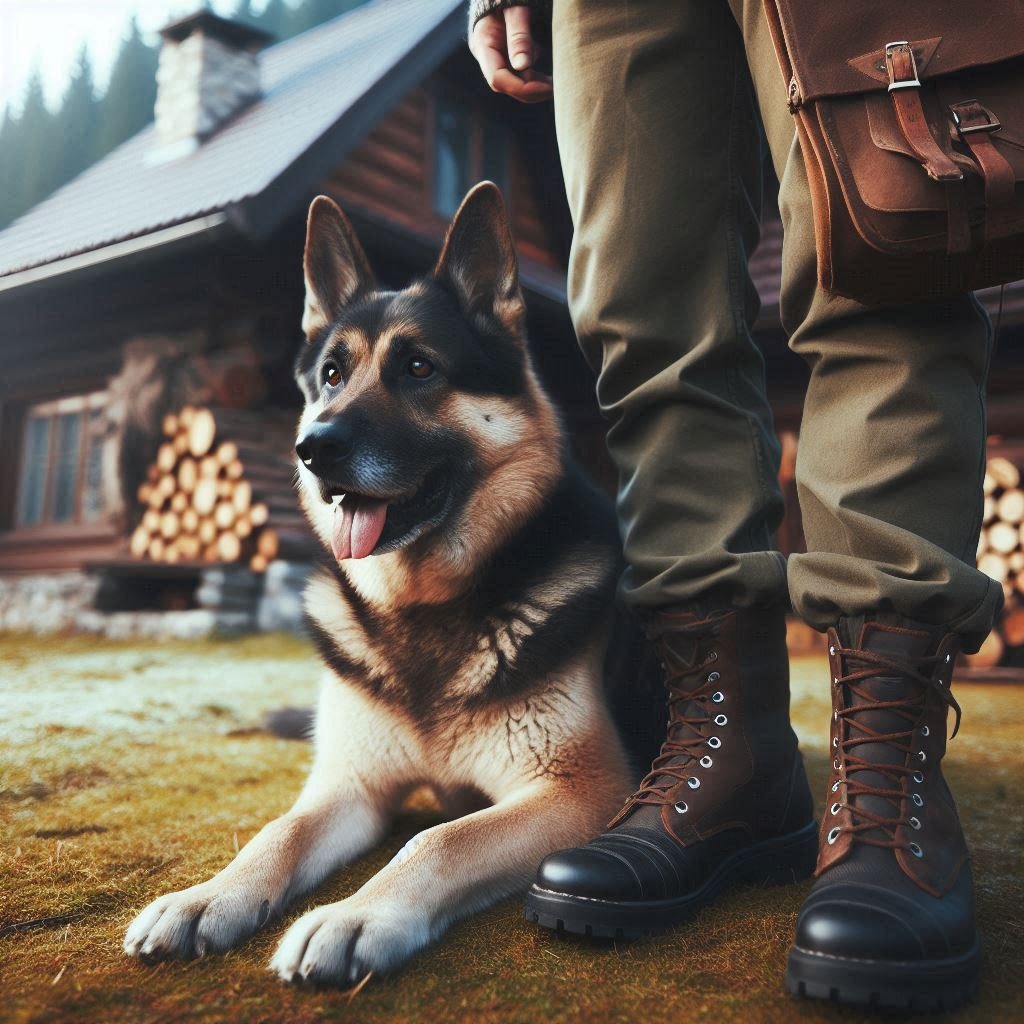Dogs are known for their loyalty and protective instincts, but sometimes these behaviors can cross the line into guarding. Understanding the signs of guarding behavior in your dog is crucial for ensuring a harmonious household and preventing potential issues. Here are some signs that might indicate your dog is guarding you:

Signs Your Dog Is Guarding You
- Following You Constantly: While some following is normal, if your dog seems to shadow you everywhere you go, even to the bathroom, it could be a sign of protectiveness. This behavior shows their desire to keep a close watch on you at all times.
- Positioning Themselves Between You and Others: Does your dog try to squeeze between you and someone you’re interacting with, or stand in front of you when someone approaches? This could be their way of guarding you, ensuring they are the barrier between you and any perceived threat.
- Stiff Posture and Staring: If your dog stands stiffly with their gaze fixed on someone you’re interacting with, it might be a sign of possessiveness and potential apprehension about the person. This body language indicates that your dog is on high alert and ready to act if necessary.
- Low Growls or Snarls: These vocalizations are a warning sign and shouldn’t be ignored. They indicate your dog feels uncomfortable with the situation and might escalate if their guarding behavior is not addressed. It’s essential to recognize these sounds as a call for help and take appropriate action.
- Blocking Access to You: Does your dog try to position themselves between you and the door or act protectively when someone new enters the house? This could be their way of guarding you as a resource, ensuring that no one gets too close without their approval.
- Increased Alertness: Your dog might seem more alert and watchful in unfamiliar environments or around new people, as if they’re on high guard duty to protect you. This heightened state of awareness is a clear indicator of their protective instincts kicking in.
Things to Consider
- Severity of the Behavior: Occasional attentiveness is different from constant vigilance or aggressive guarding. It’s important to assess whether your dog’s behavior is occasional or if it has become a persistent issue that needs addressing.
- Ruling Out Other Causes: There could be other reasons behind your dog’s behavior, like fear or anxiety. Consulting a veterinarian or animal behaviorist can help identify the root cause. Understanding the underlying issue is the first step in addressing and managing the behavior effectively.
Tips for Managing Guarding Behavior
- Positive Reinforcement Training: Reward your dog for calm and appropriate behavior around other people. Positive reinforcement helps them understand that being relaxed and friendly is beneficial and rewarding.
- Controlled Interactions: Gradually introduce your dog to new people and situations in a controlled manner with positive reinforcement. This helps them build positive associations and reduces the likelihood of guarding behavior.
- Provide Enough Attention: Ensure your dog receives plenty of love, playtime, and mental stimulation to reduce feelings of insecurity. A well-exercised and mentally stimulated dog is less likely to feel the need to guard you excessively.
- Leash Training: Having good leash manners helps you manage your dog’s interactions with others in public settings. A well-behaved dog on a leash is easier to control and less likely to exhibit guarding behavior.
- Consult a Professional: If your dog exhibits aggressive behavior or you’re struggling to manage their guarding behavior, consider consulting a certified professional dog trainer or animal behaviorist for guidance. Professional help can provide you with tailored strategies to address the issue effectively.
Conclusion
By understanding the signs of guarding behavior and taking steps to address them, you can create a more harmonious household for yourself, your dog, and anyone who interacts with them. Recognizing and managing guarding behavior ensures your dog remains a loyal companion without crossing the line into overprotectiveness.
